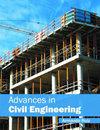Eccentric Compression Performance of Core-Steel Tube with T-Shaped Steel Reinforced Concrete Column
IF 1.6
4区 工程技术
Q3 CONSTRUCTION & BUILDING TECHNOLOGY
引用次数: 0
Abstract
This paper introduces a novel steel–concrete composite column referred to as the core-steel tube with T-shaped steel reinforced concrete (CSTRC) column, which is composed of a core steel tube with T-shaped steel embedded in a reinforced concrete column. To investigate the mechanical performance of the CSTRC column under eccentric compressive load, the load–deformation response, stress, and strain distribution of CSTRC columns under eccentric load are analyzed by finite element software. Furthermore, the effects of slenderness ratio, concrete and steel strength on the eccentric compression performance of CSTRC columns are also discussed. Finally, a set of formulas for predicting the ultimate strength of the CSTRC columns is proposed. The study results reveal that: (1) The established finite element model accurately predicts bearing capacity and strain development. (2) When the eccentricity is 0.2, the specimen exhibits characteristics indicative of small eccentricity failure. Conversely, when the eccentricity is 0.8, the specimen demonstrates traits associated with large eccentricity failure. Furthermore, as the eccentricity increases, there is a notable decrease in the bearing capacity of the specimen. (3) The slenderness ratio affects the failure mode of the CSTRC columns, with consideration for second-order effects necessary when the ratio exceeds 22. (4) Increasing the concrete strength, steel strength, and steel ratio significantly enhances the ultimate load values of the CSTRC columns. (5) A comparison between calculated and simulated values demonstrates good agreement, validating the accuracy of the proposed method.核心钢管与 T 型钢筋混凝土柱的偏心压缩性能
本文介绍了一种新型钢-混凝土复合柱,称为带 T 型钢的核心钢管钢筋混凝土柱(CSTRC),它由嵌入钢筋混凝土柱中的带 T 型钢的核心钢管组成。为了研究 CSTRC 柱在偏心压缩荷载作用下的力学性能,我们使用有限元软件分析了 CSTRC 柱在偏心荷载作用下的荷载-变形响应、应力和应变分布。此外,还讨论了细长比、混凝土和钢筋强度对 CSTRC 柱偏心受压性能的影响。最后,提出了一套预测 CSTRC 柱极限强度的公式。研究结果表明(1) 已建立的有限元模型能准确预测承载能力和应变发展。(2) 当偏心率为 0.2 时,试样表现出小偏心失效的特征。相反,当偏心率为 0.8 时,试样表现出与大偏心率失效相关的特征。此外,随着偏心率的增加,试样的承载能力也会明显下降。(3) 细长比影响 CSTRC 柱的破坏模式,当细长比超过 22 时,必须考虑二阶效应。(4) 提高混凝土强度、钢筋强度和钢筋率可显著提高 CSTRC 柱的极限荷载值。(5) 计算值和模拟值之间的比较显示出良好的一致性,验证了所建议方法的准确性。
本文章由计算机程序翻译,如有差异,请以英文原文为准。
求助全文
约1分钟内获得全文
求助全文
来源期刊

Advances in Civil Engineering
Engineering-Civil and Structural Engineering
CiteScore
4.00
自引率
5.60%
发文量
612
审稿时长
15 weeks
期刊介绍:
Advances in Civil Engineering publishes papers in all areas of civil engineering. The journal welcomes submissions across a range of disciplines, and publishes both theoretical and practical studies. Contributions from academia and from industry are equally encouraged.
Subject areas include (but are by no means limited to):
-Structural mechanics and engineering-
Structural design and construction management-
Structural analysis and computational mechanics-
Construction technology and implementation-
Construction materials design and engineering-
Highway and transport engineering-
Bridge and tunnel engineering-
Municipal and urban engineering-
Coastal, harbour and offshore engineering--
Geotechnical and earthquake engineering
Engineering for water, waste, energy, and environmental applications-
Hydraulic engineering and fluid mechanics-
Surveying, monitoring, and control systems in construction-
Health and safety in a civil engineering setting.
Advances in Civil Engineering also publishes focused review articles that examine the state of the art, identify emerging trends, and suggest future directions for developing fields.
 求助内容:
求助内容: 应助结果提醒方式:
应助结果提醒方式:


